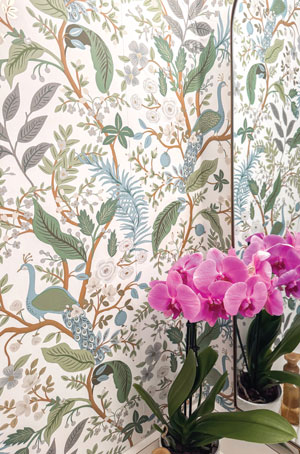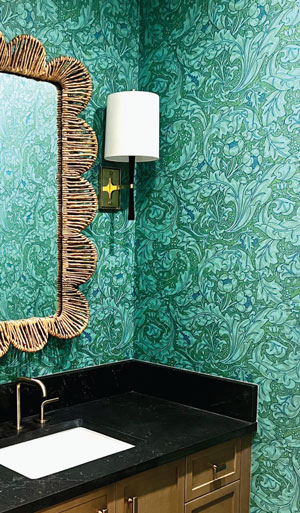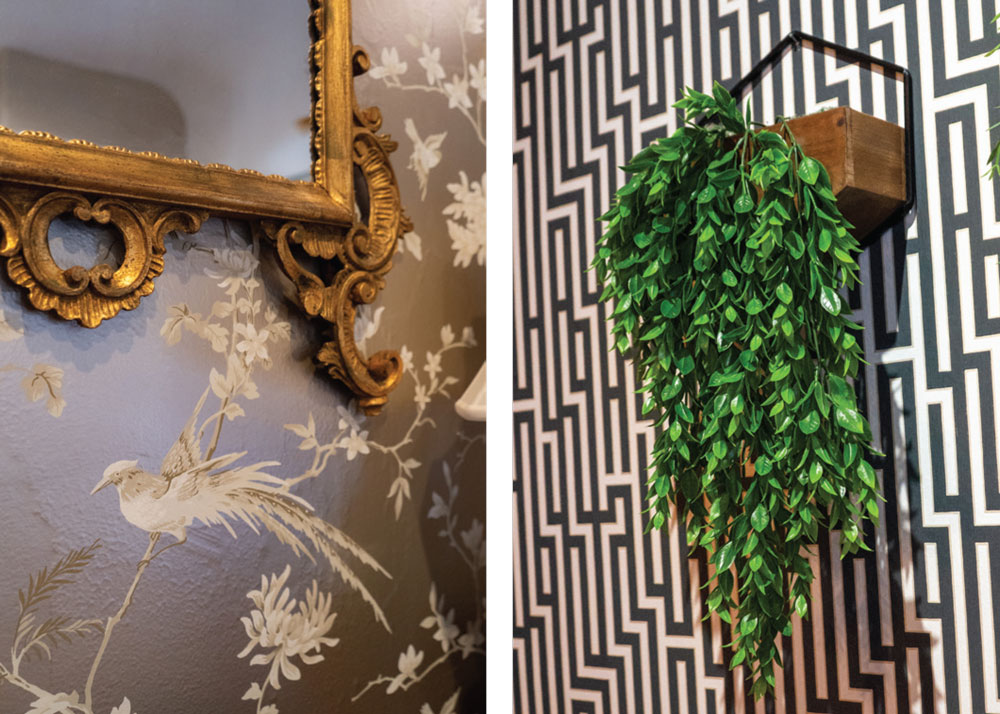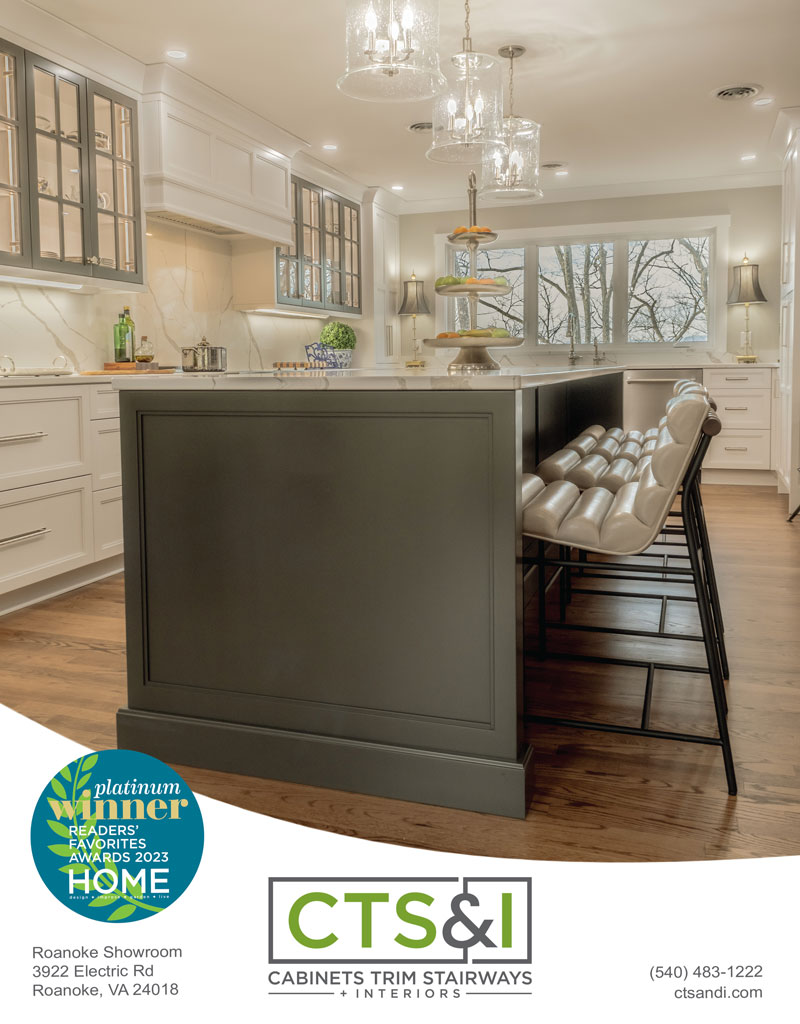WALLPAPER’S RENAISSANCE

Photo Courtesy of Jessica Durham
Palettes & patterns with panache
 With a storied history spanning centuries, wallpaper is experiencing a renaissance in interior design. Even the avante garde Rhode Island School of Design Museum has mounted a 2025 spring exhibition entitled “The Art of French Wallpaper Design.” The collection showcases more than 100 pieces of antique French wallpaper made by wood-block printing, a craft perfected by William Morris, the prolific 19th century English designer. Right Photo: James River Media
With a storied history spanning centuries, wallpaper is experiencing a renaissance in interior design. Even the avante garde Rhode Island School of Design Museum has mounted a 2025 spring exhibition entitled “The Art of French Wallpaper Design.” The collection showcases more than 100 pieces of antique French wallpaper made by wood-block printing, a craft perfected by William Morris, the prolific 19th century English designer. Right Photo: James River Media
Morris’ renowned botanical and floral patterns inspire today’s innovative American designers and manufacturers like Schumacher, Thibaut and York. What to expect from these trendsetters in 2025? Look for gorgeous wallpaper that boasts inviting textures, sustainable materials, bold colors and patterns and sweeping murals, often placed in surprising spaces. Whether traditional or peel-and-stick, wallpaper transforms rooms into ravishing works of art.
Photos Courtesy of Jessica Durham
Wallpaper’s comeback
Jessica Durham, interior designer and co-owner of Magnolia along with her mother Lori Noonkester who founded the company in 2010, observes, “I think we are continuing to see people who love wallpaper. You have the Schumachers and Thibauts, but over the last several years, many artists have introduced their own line of papers. These smaller lines give a great look and are sourced by bigger lines.
“Now wallpaper is really coming back. It’s something that can bring a lot of joy.”
2025 wallpaper trends
INTERESTING ACCENTS
Wallpaper on accent walls, ceilings and other unexpected places makes an impactful decorative statement, yet it’s also cost-effective since you’re not covering up all the walls. Wallpaper with bold colors and patterns shine on accent walls, especially in the bedroom behind the headboard, but ceilings are beckoning as the “fifth” wall. Durham says, “I love ceiling covering. I see this in kids’ spaces. It’s a great way to keep walls simple and then do something bold on the ceiling. It’s a nice way to use the fifth wall.” For nurseries and children’s bedrooms, whimsical patterns in soft pastels will charm your young ones and soothe them to sleep.
TEXTURES
Wallpaper made from natural materials such as grasscloth, raffia and silk is an elegant classic. Grasscloth wallpaper has tonal nuances that infuse texture and warmth into a room. For Durham, grasscloth has always been a “staple, classic look” in dining rooms, living rooms and foyers. While textured wallpaper is a sophisticated backdrop for many rooms, it’s not a candidate for rooms with high humidity like bathrooms or laundry rooms.
SUSTAINABILITY
Wallpaper made of natural materials and non-toxic inks are surging in popularity. Designers are seeking innovative ways to create beautiful wallpaper that sparks a feeling of well-being and preserves the environment. Biophilic wallpaper patterns of flora and fauna that invite nature into the home suffuse this style.
Photos: James River Media
 COLORS & PATTERNS
COLORS & PATTERNS
Bright colors and bold patterns are trending, but warm neutral tones are catching up. Durham explains, “I think you see both color and neutrals. The trend is turning to warmer tones like earthy tones, browns, grayish, beige and softer whites but with pops of color.” Exuberant patterns — large-scale florals and botanicals; dramatic geometrics, stripes and abstracts; exotic animal and tropical prints; trompe l’oeil designs, and scenic landscapes — are enlivening spaces. Durham says, “I think patterns are making a big comeback whether it’s a floral or an abstract wallpaper. It looks like a painting.” Left Photo Courtesy of Jessica Durham
MURALS
Most wallpapers have repeating patterns, but a mural enwraps a room with a sweeping wallcovering that paints a picture and tells a story. Durham says, “Murals are really having a comeback. I’ve seen gorgeous murals on one wall that look fantastic in dining rooms. People are liking traditional murals with really pretty countryside and classic landscape scenes. Some can be quite colorful while others have an antique older look. It depends upon the client and their style.” With the advent of digital printing, murals are more accessible, yet designers recommend that professionals install them. Durham concludes, “You need a wallpaper installer who knows what they are doing. It can be intricate.”
Wallpaper construction, installation & care
Innovations in technology and design have introduced wallpaper options that appeal to professional and amateur installers alike. Whether traditional or removable, wallpaper construction follows these basic steps:
- Select a backing, which can be woven (fabric based) or non-woven (paper)
- Apply a colored background coating (latex for fabric, vinyl for paper) to the backing
- Imprint the pattern and ink through surface, gravure, digital or silk screen printing. The wallpaper then can be pre-pasted, dried and rolled.
Installation starts with deciding how many rolls of wallpaper you’ll need. A single roll is 25-35 square feet while a double roll is 57-61 square feet. To calculate the quantity of wallpaper rolls required for a room:
- Measure the height and width of each wall, including the doors and windows. You’ll need that to match up patterns.
- Divide the total area square footage by the square footage of one roll.
- Be sure to add an allowance for errors, repairs and extra coverage.
- Consider the pattern, as that may require some extra wallpaper to make sure everything lines up.
Priming your surface and preparing your wallpaper are critical for a successful installation. Installers emphasize that the most important step in preparing walls is to use a good primer. Once you’ve cleaned and primed your walls, prepare your wallpaper by “booking” it or folding it onto itself after you’ve pasted it. This technique avoids bubbles and creases during installation. Of course, peel-and-stick wallpaper does not require this step.
Wallpaper that is not pre-pasted will require a separate adhesive. Traditional wallpaper installation might be best done by a professional, unless you have experience in this area.
If your wallpaper has reached its lifespan or is showing flaws, most installers don’t recommend repapering or repainting. However, repainting grasscloth is an exception when an oil-based primer is used. Durham notes, “I wouldn’t recommend painting over most wallpapers, but grasscloth is different. If the paper is in good condition, it’s a great look to paint over. You still get the good texture behind it, but you get the new color.”
A timeless treasure
As the RISD Museum exhibit reminds us, wallpaper has an illustrious past, but its reign in the decorative arts endures. A timeless treasure, wallpaper still brings us joy. ✦
2025 wallpaper trends, floral patterns, Grasscloth, Interior Design, murals wrap, natural materials, non-toxic wallpaper ink, raffia, silk, wallpaper, wallpaper construction, wood-block printing









